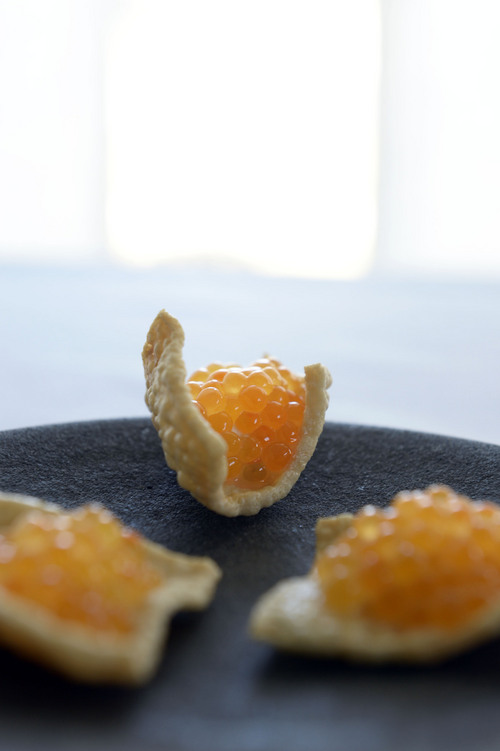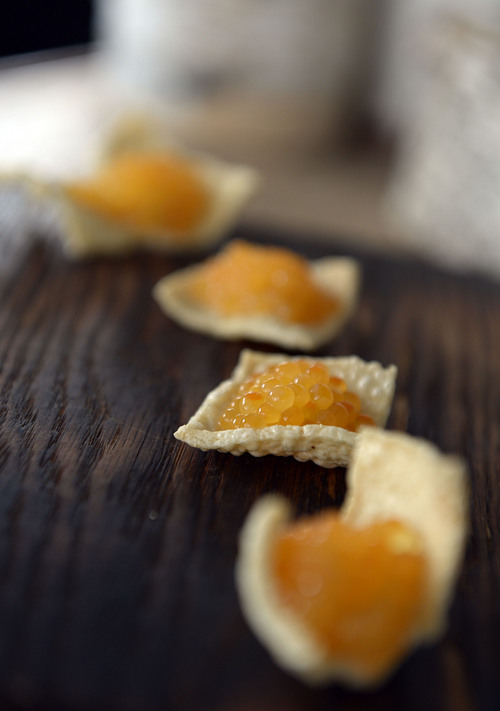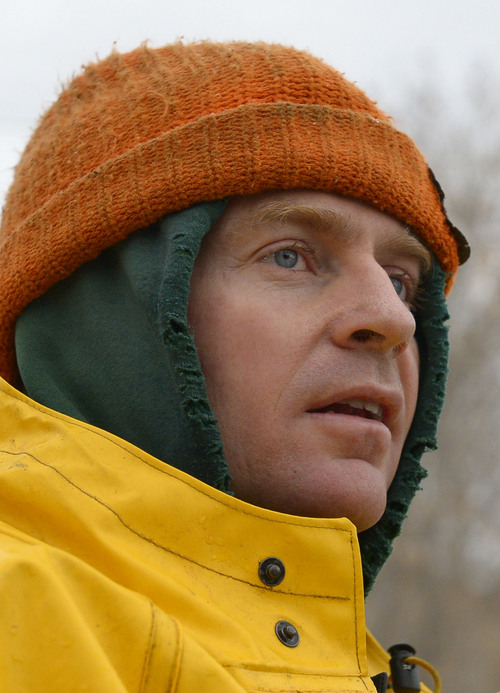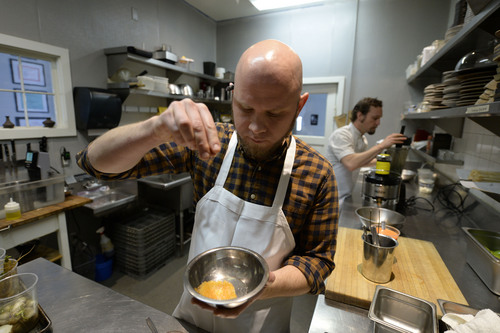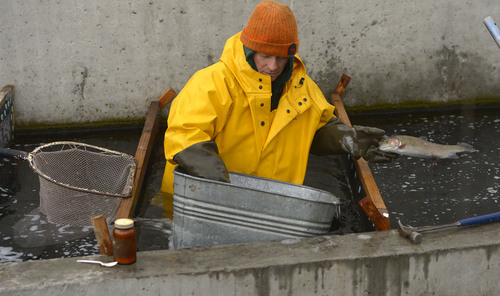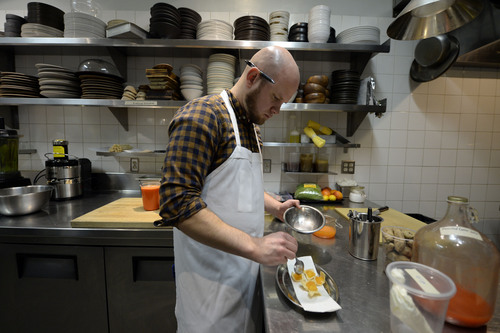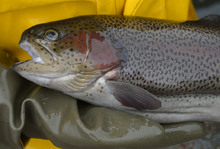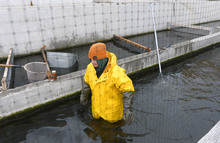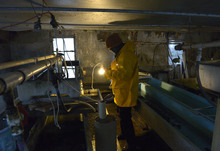This is an archived article that was published on sltrib.com in 2014, and information in the article may be outdated. It is provided only for personal research purposes and may not be reprinted.
Spring Lake • Robert Judd was a fish out of water a year ago when he started producing caviar — one of the world's most expensive and luxurious foods — at his small rainbow trout farm near Payson.
"I'd never even tried caviar before," admitted the owner of the century-old Spring Lake Trout Farm.
When Bowman Brown, the award-winning chef from Forage, showed an interest in buying the fresh, orange-colored roe for his Salt Lake City restaurant, Judd saw it as a way to diversify his family-owned business.
Traditionally, caviar comes from beluga sturgeon caught in the Caspian Sea on the border of Russia and Iran. The species, however, is now over-fished and near extinction, prohibiting its sale in the United States. Today, American companies fill the need by producing caviar from the roe of wild and farm-raised sturgeon, salmon, whitefish, paddlefish and trout.
Extravagant, preserved caviar often can be "too salty, fishy tasting and not that great," Brown said. So when he read about a chef in Sweden who uses freshly harvested trout roe, he was intrigued and decided to float the idea past Judd.
"Robert was more than willing to give it a shot," said Brown, who was recently named a semifinalist in the prestigious James Beard Foundation Awards.
Brown has used the tiny, bead-shaped eggs in a variety of ways; currently, they fill a house-made potato cracker, which is served along side pinon-wood smoked trout. He serves about two quarts — or about 15,000 eggs — to Forage customers each week.
"I always try to showcase how unique it is and present it without taking away from its delicate flavor or texture," Brown said. "If you put it in a butter sauce it would lose its magic."
Rinsed and lightly salted just before serving, the caviar surprisingly "doesn't have the taste of fish," said Brown. "It's more like an egg yolk."
Biting into the eggs, diners experience a "gentle pop" and then they "melt in your mouth," he said. "For most people it's a different experience."
—
Producing caviar was a different experience for Judd, too.
Judd's father, an avid fisherman who owned clothing stores in Nevada, bought the business 35 years ago on a whim. Judd was 7 at the time.
"We were in Payson trying to find a relative," Judd remembered. "We stopped for directions and found out the trout farm was for sale."
The main source of income for the Judd family from Spring Lake Trout Farm, founded in 1912, has been raising live trout to stock in reservoirs and private ponds, including those at East Canyon and Snowbird.
The family has supplemented its income by allowing the public to fish from a large pond on the property and by selling "eyed" trout eggs to hatcheries.
Judd said the farm's future is now in selling the eyed eggs, which have been fertilized and are about halfway through the incubation. (The eggs that Judd sells as caviar are not fertilized.)
As environmental standards increase and governments crack down on overfishing, it is farmed fish — raised in hatcheries — that are satisfying the increasing demand for seafood worldwide. Because of that, "the demand for trout eggs is going through the roof," said Judd.
At least once a week he receives requests for "eyed" fish eggs from all over the world: a hatchery in Budapest asked for 50,000 eggs; businesses in Great Britain and the Middle East want 5 million eggs each.
To keep up with demand, Judd has installed new concrete ponds and he is building a new hatchery, which will allow him to triple the circulation of the fresh water coming from a nearby spring, which in turn, will increase fish and egg production.
—
To collect the fish eggs — for both caviar and for fertilization — Judd uses a process called stripping, which extracts the eggs without having to cut open and kill the fish.
Once a week, he sifts through the rainbows, looking for females ready to spawn. He separates them from the other fish and then one by one, gives them a mild anesthesia, which relaxes them and makes it easier to push the eggs out of their bellies.
After about a minute or two, the fish comes to and swims away.
A one-pound rainbow trout will produce about 1,000 eggs each year for several years, Judd said. That's a minimal amount compared to sturgeon, which will produce 100,000 eggs per pound.
The rainbow trout eggs taken to Forage each week are left in the ovarian fluid, which will keep them fresh until the chef is ready prepare them for service, said Judd, who hopes that more Utah chefs will purchase the locally-produced caviar.
He's working with the Utah Department of Agriculture to make sure he's following proper food safety guidelines. But "they've never had a request for caviar before," he said. "So they're trying to come up with guidelines."
Utah's agriculture community is excited about the development of this one-of-a-kind Utah product, said Matt Hargreaves, the Utah Farm Bureau's vice president of communications.
"There's not a whole lot of fish farmers left in Utah," he said. "So this is another way to help preserve that lifestyle."



